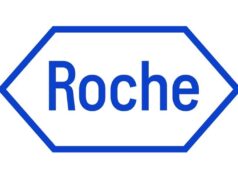
Recently published data from two large randomised controlled trials (RCTs) have indicated there may be minimal benefits—or even negative effects—associated with bypassing local or primary stroke centres (PSCs) and transporting patients straight to thrombectomy-capable comprehensive stroke centres (CSCs). However, investigators are in agreement that additional research is required to further elucidate the impact of transferring stroke patients directly to CSCs.
In late 2023, several leading US neurointerventionists published an editor’s column in the Journal of NeuroInterventional Surgery (JNIS) in which they argue that the latest data from the studies in question, TRIAGE-STROKE and RACECAT, should not be misconstrued and may in fact affirm the benefits of direct transport protocols within acute stroke care. NeuroNews’ coverage of this paper and an accompanying statement from the Society of NeuroInterventional Surgery (SNIS) can be seen here.
Results from the first of these studies—the TRIAGE-STROKE trial, which compared transport strategies in patients with suspected acute large vessel occlusion (LVO) stroke—were published earlier this month in the journal Stroke by Anne Behrndtz (Aarhus University Hospital, Aarhus, Denmark) et al.
“Equipoise remains between transport strategies and the best transport strategy is not well established,” the authors initially posit, outlining the existing knowledge gap they sought to ameliorate.
In TRIAGE-STROKE, patients eligible for intravenous thrombolysis (IVT) with suspected LVOs were randomised 1:1 to admission to the nearest PSC, prioritising IVT, or direct CSC admission, prioritising endovascular therapy (EVT). The primary outcome was functional improvement at day 90 for all patients with acute ischaemic stroke, measured as a shift towards a lower score on the modified Rankin scale (mRS).
From September 2018 to May 2022, Behrndtz and colleagues enrolled 171 patients, of whom 104 were found to have had an acute ischaemic stroke. The authors report that the trial was halted before full recruitment, and also detail that baseline characteristics were “well balanced” across the patient population.
A primary analysis of the mRS shift (ordinal logistic regression) revealed an odds ratio (OR) for functional improvement at day 90 of 1.42. In addition, the onset to groin time (EVT) for patients with LVO was 35 minutes shorter when patients were transported to a CSC first, whereas onset to needle (IVT) was 30 minutes shorter when patients were transported to a PSC first. IVT was administered in 67% of patients in the PSC group versus 78% in the CSC group, and thrombectomy was performed in 53% versus 63% of the patients, respectively.
“This trial investigated the benefit of bypassing PSCs,” Behrndtz et al conclude. “Lack of power prevented the results from showing effect on functional outcome for patients going directly to CSCs.”
New RACECAT data
In May 2022, investigators published overall results from the multicentre, population-based RACECAT RCT—the primary objective of which was to assess the impact of bypassing local centres when transferring ischaemic stroke patients—in the Journal of the American Medical Association (JAMA). Similarly to TRIAGE-STROKE, it ultimately found no effect on clinical outcomes between differing transport protocols. And, now, a more recent, secondary analysis of RACECAT, published in JAMA Neurology by researchers Anna Ramos-Pachón (Hospital Germans Trias i Pujol, Barcelona, Spain) et al, has revealed a comparable trend in patients experiencing intracranial haemorrhage (ICH).

Initially, the authors deliver a similar message to Behrndtz et al, stating that “the effect of different protocols among patients receiving a final diagnosis of ICH is unknown”. As such, they attempted to evaluate whether prehospital transfer protocols bypassing the nearest PSC in favour of direct transport to a CSC would prove harmful or beneficial among these patients.
Their prespecified secondary analysis included a total of 302 patients from the RACECAT study, of whom 137 were transported directly to a thrombectomy-capable centre while 165 were transferred locally to the closest stroke centre. The analysis’ primary outcome was a shift in 90-day mRS score across the intention-to-treat population, with cumulative ordinal logistic regression being used to estimate a common OR. A multitude of secondary outcomes included 90-day mortality, early neurological deterioration/mortality, ICH volume and enlargement, and rate of adverse events until day five.
Relaying their results, Ramos-Pachón and colleagues note that direct transfer to a CSC resulted in worse functional outcomes at 90 days compared with transfer to the nearest local stroke centre (mean mRS, 4.93 vs. 4.66; adjusted common OR, 0.63). Direct CSC transfer “also suggested potentially higher 90-day mortality” versus local stroke centre transfer (48.9% vs. 37.6%), and the rates of medical complications during initial transfer (22.6% vs. 5.6%) and in-hospital pneumonia (35.8% vs. 17.6%) were also higher in the former group of patients.
“In this secondary analysis of the RACECAT randomised clinical trial, bypassing the closest stroke centre resulted in reduced chances of functional independence at 90 days for patients who received a final diagnosis of ICH,” the authors conclude. “These results suggest that transfer protocols based on bypassing local stroke centres may result in worse functional outcomes for patients with ICH—although this finding requires replication in other settings.”
Final thoughts
“Even though there were no significant results, there seemed to be a trend towards benefit for the ischaemic stroke patients bypassing to the CSC [in TRIAGE-STROKE],” said Behrndtz, speaking to NeuroNews following publication of these data. “But I fully agree with Dr Ramos-Pachón [and colleagues] that, as long as we do not have solid evidence for bypassing these patients, and we know that we harm patients with ICH, we should go local when triaging patients with severe neurological deficits. However, further research should address improvement of stroke diagnosis in the field.”
In addition, Ramos-Pachón told NeuroNews that she “totally agrees” with this viewpoint, and went on to reiterate that there was no trend toward benefit shown in ischaemic stroke in the original RACECAT results—despite it accommodating even greater between-group differences in time to treatment with reperfusion therapies (EVT and/or IVT) than those observed in TRIAGE-STROKE.
“So, with no evidence of benefit for ischaemic stroke and possible harm to those patients triaged suffering an ICH, bypassing protocols should only be considered in very select conditions,” she added, also echoing Behrndtz’s point about the need for further research in this space.









